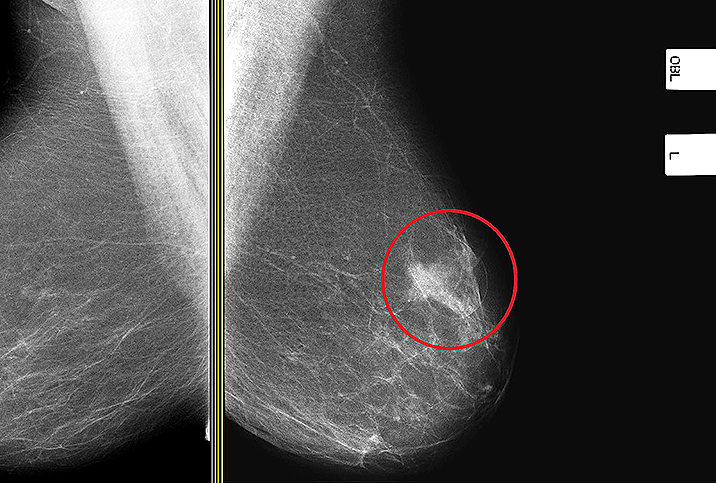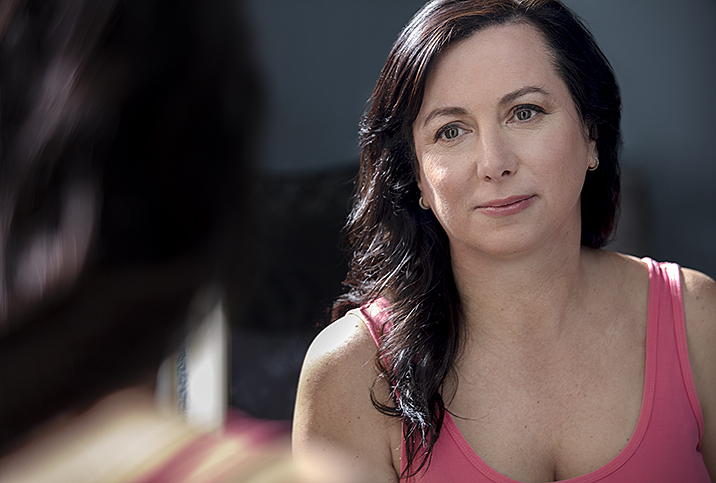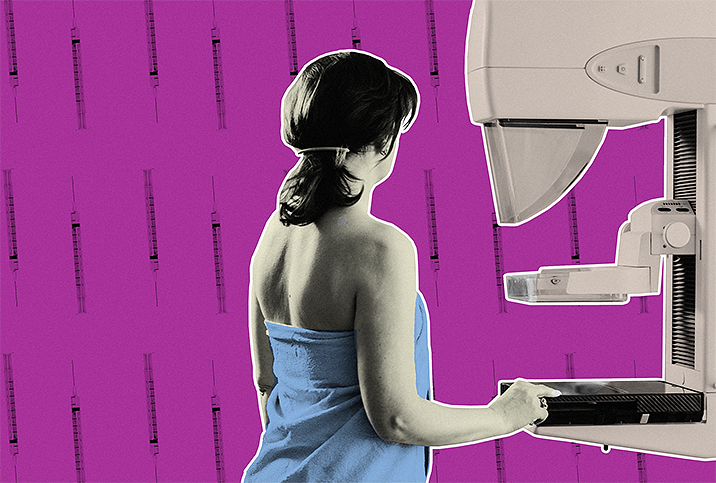The Facts About Mammograms

Roughly 1 in 8 women in the United States—or about 13 percent—will develop breast cancer. When compared with other types of cancers, the survival rate for breast cancer has greatly improved in recent decades, thanks in large part to increased early detection through the use of screening procedures such as mammograms.
Mammograms are a procedure in which an X-ray image is taken of the breasts to screen for cancer or any other abnormalities. They play a significant role in early detection and reducing breast cancer deaths, according to the Mayo Clinic.
Who should get mammograms?
Medical experts and organizations don't agree on when women should start getting regular mammograms or how frequently they should get them.
Some medical organizations suggest women with an average risk of breast cancer should have the choice of getting mammograms annually or every other year starting at age 40. The American Cancer Society is one of those organizations. Additionally, the ACS recommends women with average risk get annual mammograms from ages 45 to 54, and then possibly decrease the frequency to every other year after that.
The best way to find out what mammography schedule is best for you is to talk to your doctor about your preferences as well as the benefits and risks of regular screenings. Your doctor will likely make a recommendation based on these factors as well as on your risk level for breast cancer.
If you're at a higher-than-average risk for breast cancer, it might be beneficial to begin getting regular mammograms sooner than you would otherwise. Breast cancer risk is determined based on personal and family history of the disease, genetics and more. Don't be afraid to take a proactive role in maintaining your breast health by initiating these conversations with your doctor.
The importance of mammograms
Successful treatment of breast cancer is much more likely when it is detected and treated early. That's why mammograms play an important role in early detection and the reduction of breast cancer deaths.
Mammography is used for both screening and diagnostic purposes. Screening mammograms are for preventive health checkups once women reach a certain age. Diagnostic mammography is used to investigate suspicious breast changes. Your doctor may recommend a diagnostic mammogram if you discover a new breast lump, experience breast pain, notice skin or nipple changes, or have nipple discharge that is not milk. It is common to have a breast ultrasound with the diagnostic mammogram, for a more accurate diagnosis. They are rarely not done together.
That regular mammogram appointment may not be your favorite trip, but reconsider before you decide to skip it—it could save your life.
What to expect during a mammogram
It's not uncommon to feel nervous before your first mammogram, but don't worry—the procedure is pretty straightforward and lasts only a few minutes.
When you arrive at the mammography clinic, you'll be instructed to take off any necklaces as well as your clothes from the waist up—so be sure not to wear a dress or any other one-piece ensemble to your appointment.
Once the procedure is ready to start, a technician will instruct you to stand in front of an X-ray machine made for mammography. One of your breasts will be placed on a platform that is brought to your height while a clear plastic plate gradually presses your breast against the platform.
The plastic plate is used to compress your breast and even out its thickness so the X-rays can penetrate the breast tissue and capture images. According to the Mayo Clinic, this pressure isn't harmful but it can be uncomfortable or even painful. You should let the technician know if the discomfort is too much so the plate can be readjusted if possible. The pressure applied by the plastic plate also helps ensure a clear image can be taken without any blur caused by motion.
During the mammogram, you will be exposed to X-rays only briefly, at which time you will be instructed to stand still and hold your breath. Once the first breast has been screened, the process starts again on the other breast.
Getting your results
Shortly after your mammogram, a radiologist will examine the images of your breast tissue and report the findings to your doctor. If your mammogram showed no signs for concern, your doctor will let you know that everything came back normal. This process usually takes a few days.
There's always a chance the mammogram will show some abnormalities. If necessary, your doctor may recommend further testing. In fact, many times further mammogram views will be needed.
According to the Mayo Clinic, possible mammogram findings include calcium deposits in ducts and other tissues, masses or lumps, asymmetric areas on the mammogram, dense areas confined to one breast or a specific area in the breast, or changes since your last mammogram.
Calcifications can form in the breast as a result of inflammation, trauma or aging. Certain small, irregular calcifications, called microcalcifications, may be a sign of cancer. The American Cancer Society reports that most breast calcifications are benign, but if they appear irregular, further testing may be needed.
Don't be afraid to take a proactive role in maintaining your breast health by initiating these conversations with your doctor.
Areas that appear dense on the mammogram can be either cancer or healthy breast tissue that is denser than normal due to its glandular composition. It's actually quite common to have dense breasts, though for most women, density is lost with age.
Breast cancer is more likely to go undetected in women who have dense breast tissue and they are more at risk of developing cancer, according to medical experts.
While doctors are unsure of why women with dense breasts are more at risk of cancer, the reason breast density makes it harder for a mammogram to detect the disease is fairly straightforward: dense breast tissue can mask signs of cancer and make them harder to see in a mammogram. This is because in mammograms, fibrous and glandular tissues appear white—as do masses and tumors—while fatty tissue appears almost black. For this reason, mammograms tend to be less accurate for women with dense breasts.
If you discover after getting your first mammogram that you have dense breast tissue (which can only be determined through a mammogram), you should talk with your doctor about whether you need supplemental screening, such as a 3D mammogram, a breast ultrasound or a breast MRI (magnetic resonance imaging). All of these procedures carry additional risks, so whether they're right for you will depend largely on your personal risk for breast cancer, as well as your preferences.
The decision to get regular mammograms is ultimately a personal choice. Keep in mind the chances of developing breast cancer, and realize that regular preventive health checkups to screen for the disease could be lifesaving.


















